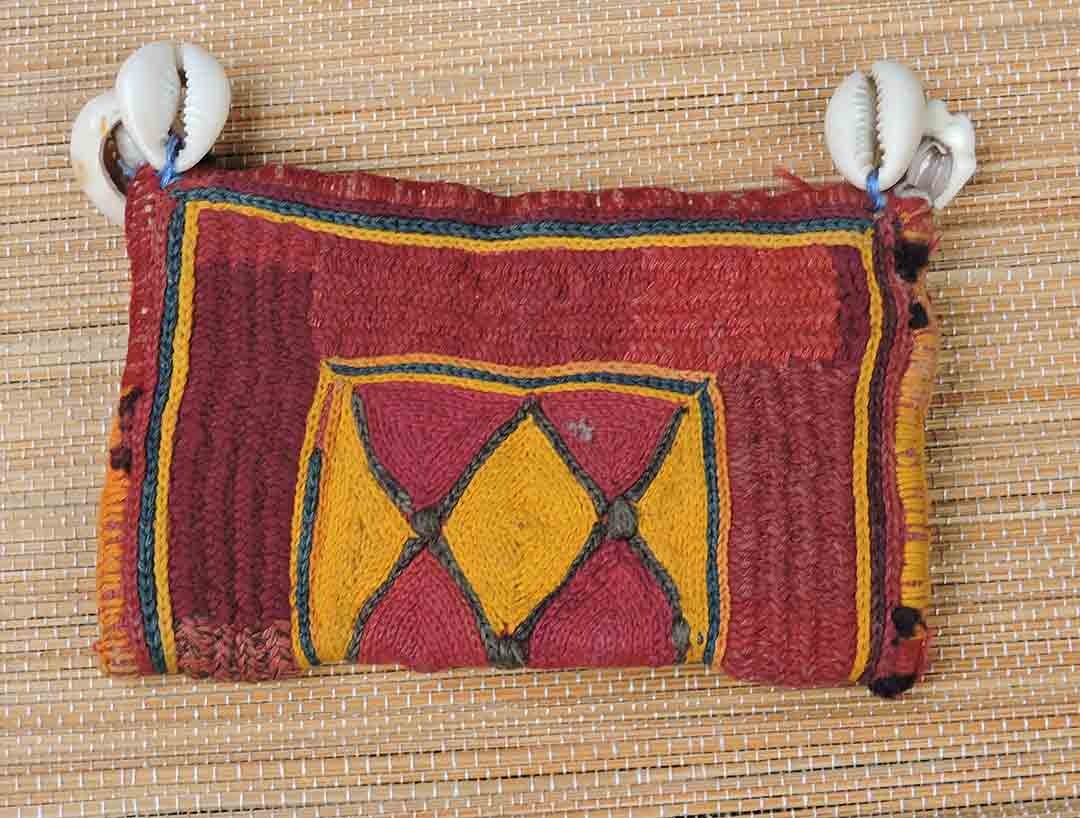Dhataniya are little bags and part of the dowry made and given before or at a wedding. Dhataniya (sometimes spelled Dataniya) are intended to hold datun or the neem twigs used for brushing teeth. Neem twigs have a natural disinfectant, and brushing teeth with it strengthens teeth and keeps tooth ailments at bay.
This particular piece was one of the first pieces of Banjara embroidery I purchased. I found the bag at a tribal exhibition on a hot afternoon in Delhi and bought it from two Banjara women who were manning an empty stall. With great reluctance, the women showed me the older pieces; they were more interested in selling what they had made, which was nice but not as nice as the older pieces. I chose a few small objects, which were all part of the dowry retinue, and to put it more bluntly, they were all I could afford then! Since I bought the pieces, they have remained confined to a box for soon after I bought them, I lost my mother. It is only recently that I dug into that collection.

The reverse side of the bag. An upcycled square piece of textile was embroidered and then folded in half and stitched along the sides. It is finished with cowrie shells. This was not embroidered as two separate pieces and then stitched together as a normal bag would be.
The few experts I consulted confirmed that the bag was a dhataniya. Dhataniya are open bags and measure about 4 to 5 inches in height and depth and are about 8 to 10 inches in length. The length of a neem stick, when store bought, is about 6 to 7 inches, but when simply torn off of a branch and broken can be smaller, 2 to 5 inches. This particular dhataniya is smaller and measures only 3 inches in height and 5 inches in length.
In a custom carried out in Banjara community during the pre-wedding ceremony, the bride goes around the village carrying neem sticks or datun. She gives one stick to each of the elders of the community, along with a pot of water, and seeks their blessings. The sticks are carried in this bag, which is specially made for this purpose.
For weddings, it is rare for all dowry items to be made new. At times, old embroidered pieces are upcycled, or recycled, into smaller pieces. Embroidered belts from old skirts are fashioned into bags and other items. Usually, a rectangular piece is embroidered and folded in half to form a square bag. This piece looks to have been made in the same way, a square embroidered cloth has been folded in half to form the small rectangular bag.
Chitra Balasubramaniam writes, collects, and experiments with textiles, and follows her passions by writing about food, travel, and heritage. She dabbles with stock-investment analysis and research. She also runs a small travel guide at www.visitors2delhi.com. Find her on Instagram as @visitors2delhi.

